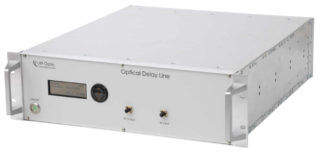5G testing in a telecom provider’s lab for interoperability purpose
The increasing demand for 5G connectivity necessitates robust interoperability testing across diverse base station equipment...
 As RFOptic, we offer our customers 4 groups of products, namely RFoF off-the-shelf links, subsystems, Optical Delay Lines, and customized systems. In this blog post, we will focus on Optical Delay Lines and their intricacies. We have a proven track record in various industries, including telecommunications, aerospace, and defense. RFOptic’s optical delay lines are known for their high-performance thanks to our cutting-edge technology combined with a customer-centric approach. This means that RFOptic’s optical delay lines (ODLs) meet the most stringent requirements for accuracy, reliability, and performance.
As RFOptic, we offer our customers 4 groups of products, namely RFoF off-the-shelf links, subsystems, Optical Delay Lines, and customized systems. In this blog post, we will focus on Optical Delay Lines and their intricacies. We have a proven track record in various industries, including telecommunications, aerospace, and defense. RFOptic’s optical delay lines are known for their high-performance thanks to our cutting-edge technology combined with a customer-centric approach. This means that RFOptic’s optical delay lines (ODLs) meet the most stringent requirements for accuracy, reliability, and performance.
ODL is a customized solution engineered to replicate real-world propagation delays, which addresses the need to simulate distance with precision for communication and testing. However, designing an ODL isn’t an easy, one-size-fits-all endeavor. On the contrary, it requires taking numerous parameters into account to achieve optimal performance. Let’s delve into the intricacies of ODL design, from initial requirements to a tangible proposal.
Understanding the Core Parameters
Before everything else, it’s essential to understand the specific requirements and needs of the customer to define the parameters.
These parameters encompass:
Simplifying the Design Process with RFOptic
Now that we have gotten a glimpse of the complexity of ODL design, let’s see how RFOptic can help simplify the process using its intelligent, streamlined approach. To make things easy for our customers, we have set up our online Request for Quote (RFQ) process (accessible at https://rfoptic.customcode.co.il/request-for-quote/) that helps to define the essential parameters, ensuring we at RFOptic capture our customers’ specific needs.
After submitting the filled out the Request for Quote form, a technical consultation takes place to discuss the ODL project. Based on the collected information, RFOptic’s team leverages proprietary design tools to create a tailored ODL solution. This smooth path from design to implementation ensures that the customer receives the high-performance ODL that fits its requirements.
To summarize, designing a custom Optical Delay Line can be a complex undertaking, but with a clear understanding of the key parameters and the support of experienced professionals, customers can achieve a solution that delivers exceptional performance. Our streamlined design process and commitment to customer satisfaction make us the ideal partner for ODL design and implementation.
Want to learn more about RFOptic’s Optical Delay Lines? We have several resources available.